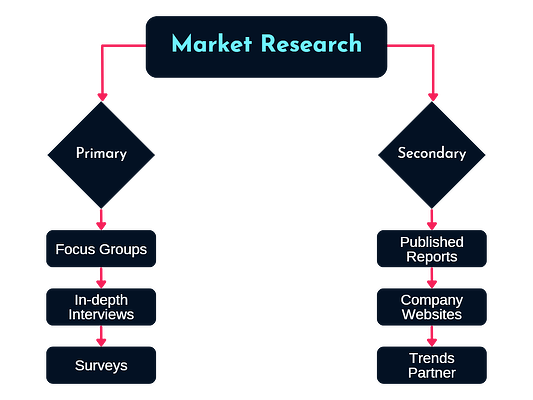
First things first, data sources can be split into two main categories: primary and secondary. But before you start diving into primary sources, it's a good idea to check out secondary sources first. These are sources that are either publicly available or relatively cheap to access and can serve as the foundation for any analysis or business decision. Just make sure you trust the source, and we can help with that!

Primary data is information that is collected specifically for your needs, directly from people who are part of the industry you're studying. There are a few different ways you can gather primary data, and the method you choose will depend on your research goals and the level of detail you're looking for.
So there you have it! A rundown of some secondary and primary data sources that can help you get a handle on all that information out there. We love all of these methods and resources and use them daily. When we are presented with a broad category and industry analysis, we us these methods to narrow down information in order to develop a hypothesis.

The original version of this page was published at: https://blog.mdrginc.com/which-method-is-which-primary-data-vs-secondary-data
MDRG is a small-by-design insights firm empowering strategically-minded professionals to impact brands through market research. Our proprietary Whole Mind™ approach integrates System 1 and System 2... Read more
Market research is only one data source brands should consider when evaluating their brand. With 99.5% of data going un-tapped, we looked at a few different data sources that can inform ...read more
The metaverse is polarizing. Some marketers and brands are embracing the new frontier and going all out building their metaverse brand. Other marketers are avoiding it like the plague, ...read more
It was a dream project: a new product launch, and I was the brand manager. I was responsible for everything: agency management, ad budgets, strategy. As I was preparing to ...read more
In MDRG’s 2022 "State of Healthcare Experience" report, we identified the three key strategies healthcare entities need to implement to create a successful customer ...read more